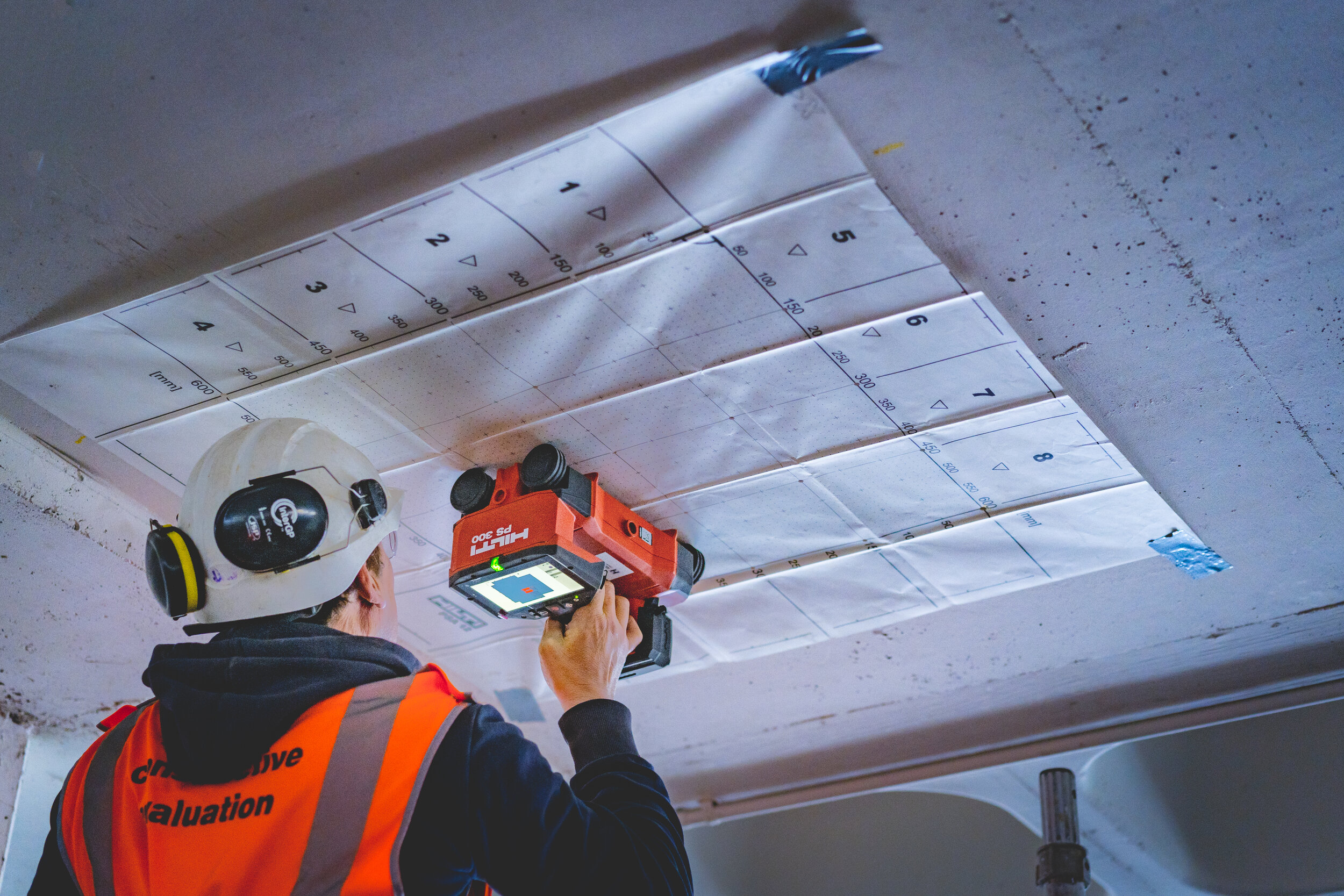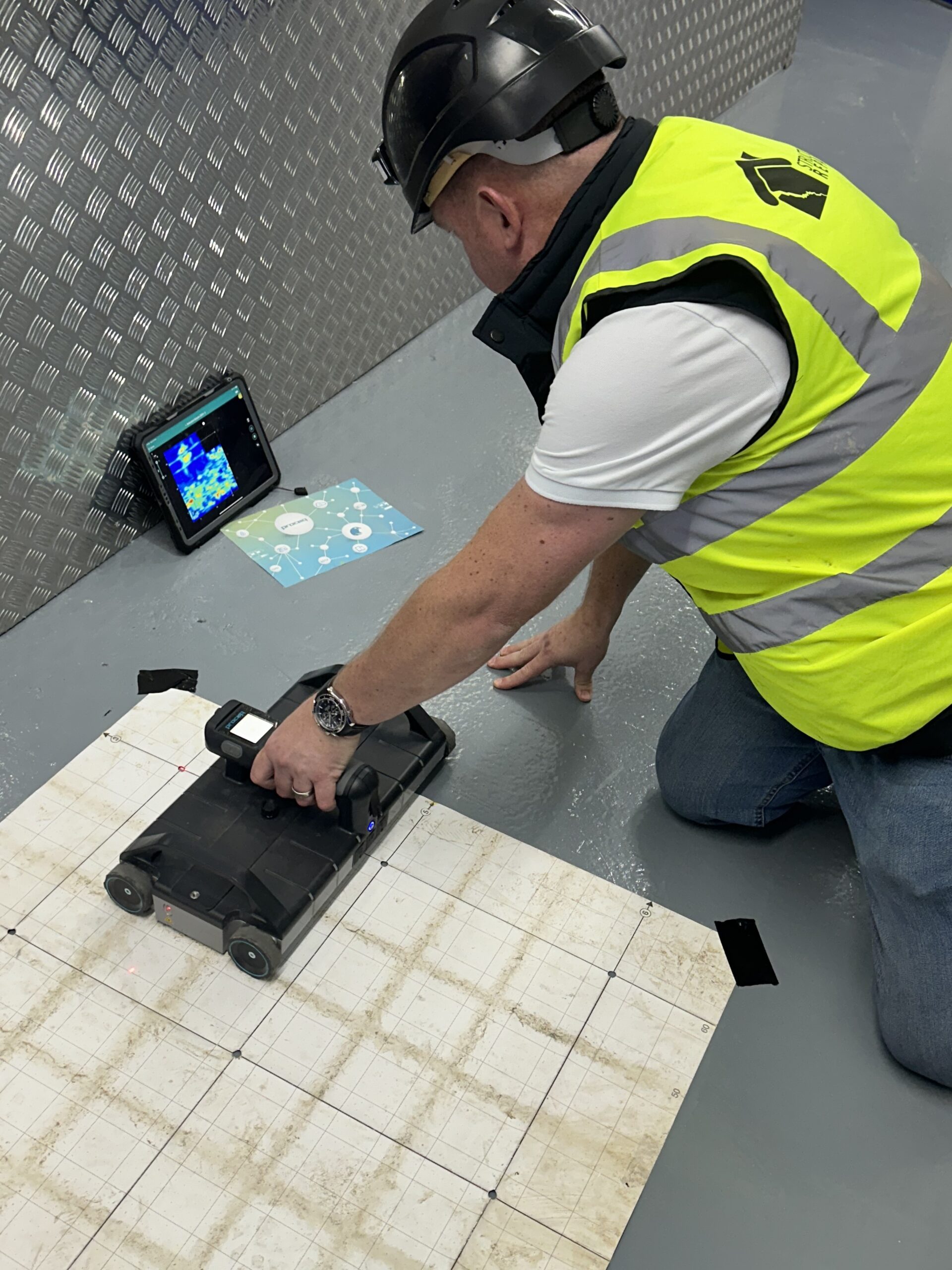Maximizing Effectiveness and Minimizing Dangers: The Duty of Concrete Scanning in Building And Construction
In the realm of building, where precision and security are critical, the use of concrete scanning modern technology has come to be an important tool for project managers and designers alike. By harnessing sophisticated scanning techniques, building and construction teams can navigate intricate atmospheres with increased efficiency while minimizing possible dangers that might jeopardize both budgets and timelines.
Relevance of Concrete Scanning
Concrete scanning plays an essential role in making sure the architectural stability and safety and security of construction tasks by properly detecting embedded objects and prospective risks within concrete frameworks. By utilizing numerous scanning technologies such as ground-penetrating radar (GPR) and electromagnetic induction, construction teams can determine rebar, post-tension wires, avenues, and various other covert barriers before exploration, reducing, or coring into concrete. This aggressive technique helps prevent expensive problems, injuries, and project delays that might emerge from accidentally striking these things during building activities.
Additionally, the exact mapping of ingrained objects ensures the reliable execution of construction strategies, decreasing the threat of mistakes and making sure the long life and resilience of the built setting. Ultimately, investing in concrete scanning services contributes to the overall success and security of construction jobs.

Advanced Modern Technology in Building And Construction
Given the raising need for accuracy and effectiveness in building and construction techniques, the integration of sophisticated technology has become important in enhancing project end results and making certain ideal safety and security actions - RainierGPR Concrete Scanning. One considerable development is Structure Info Modeling (BIM), a digital representation of a structure's physical and practical qualities. BIM enables for better cooperation among stakeholders, enhanced visualization of the job, and improved decision-making throughout the building and construction procedure. Additionally, the usage of drones in construction has reinvented website studies, progress tracking, and inspections. Drones offer real-time data, enhance safety and security by reducing the requirement for workers to access high-risk areas, and enhance general project monitoring. Additionally, the implementation of Increased Reality (AR) and Digital Truth (VR) innovations in building and construction design and planning phases allows stakeholders to picture the end product, identify prospective issues, and make essential adjustments prior to building begins. These innovations streamline processes, minimize errors, and eventually add to much more effective and more secure building and construction techniques.

Advantages of Object Mapping
The utilization of item mapping technology in building tasks uses a plethora of benefits that enhance project preparation and implementation. One of the crucial advantages of things mapping is its capability to give specific and in-depth details regarding the area of below ground energies, architectural elements, and other items within the building and construction site. This details is essential for ensuring that excavation and boring tasks are executed securely and efficiently, lessening the danger of damage to existing infrastructure.
Furthermore, object mapping technology makes it possible for building teams to produce exact 3D designs of the website, enabling for better visualization of the job and boosted coordination amongst various professions - RainierGPR Concrete Scanning. This improved spatial awareness helps to identify prospective clashes and conflicts early in the drawing board, reducing the need for expensive rework and delays throughout construction
Furthermore, object mapping can likewise improve the documents procedure by supplying digital records of the site before, during, and after building. These records work as valuable references for future maintenance and remodelling jobs, eventually enhancing the long-term performance and sustainability of the built setting.
Preventing Expensive Mistakes
Object mapping innovation's duty in building and construction prolongs past enhancing project planning and implementation to encompass a vital element: avoiding costly errors. By utilizing advanced concrete scanning strategies, construction groups can recognize potential threats such as rebar congestion, post-tension cables, or voids within concrete structures. Overall, the positive use of concrete scanning innovations in construction jobs considerably decreases the danger of mistakes and eventually adds to cost savings and helpful resources task effectiveness.
Ensuring Safety and Quality
To maintain the greatest criteria of safety and quality in building and construction jobs, the application of concrete scanning innovation plays an essential role. By using sophisticated scanning techniques such as ground-penetrating radar (GPR) and electromagnetic induction, building groups can find possible risks hidden within concrete frameworks before commencing any type of work. This proactive strategy not just minimizes the danger of accidents on the building website however additionally guarantees the structural honesty of the structure.
Concrete scanning likewise assists in validating the placement of rebar, avenues, and post-tension cable televisions, assuring that these elements are appropriately placed based on the design requirements. This accuracy in situating essential parts helps stop errors throughout the building process, eventually bring about a higher high quality ended up product. Furthermore, by identifying find more information any anomalies or inconsistencies within the concrete beforehand, needed changes can be made without delay, minimizing the likelihood of rework and costly delays.
Essentially, concrete scanning technology functions as a beneficial device in safeguarding both the security of construction employees and the general high quality of the constructed setting. Its capability to find possible dangers and make sure adherence to layout criteria makes it an important asset in contemporary building methods.

Conclusion
In verdict, concrete scanning plays an essential role in making best use of efficiency and lessening risks in building and construction projects. By making use of sophisticated technology for item mapping, prospective costly errors can be avoided, ensuring security and top quality of the last framework. It is vital for building and construction firms to prioritize making use of concrete scanning to boost performance, reduce risks, and deliver premium lead to their tasks.
Concrete scanning plays a crucial role in guaranteeing the structural stability and safety and security of look at here construction projects by precisely finding ingrained objects and possible hazards within concrete frameworks. The execution of Enhanced Fact (AR) and Virtual Truth (VR) innovations in construction layout and planning phases allows stakeholders to imagine the final product, identify possible issues, and make required modifications prior to construction begins. By utilizing advanced concrete scanning methods, building and construction teams can identify potential hazards such as rebar congestion, post-tension cable televisions, or voids within concrete structures. Overall, the proactive use of concrete scanning technologies in construction jobs dramatically minimizes the risk of errors and eventually contributes to cost savings and job performance.
To maintain the greatest standards of safety and security and high quality in building projects, the execution of concrete scanning technology plays an essential function.